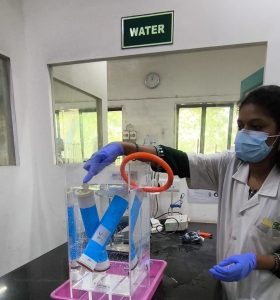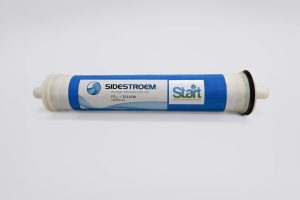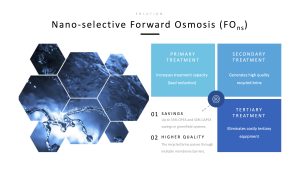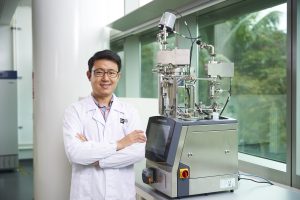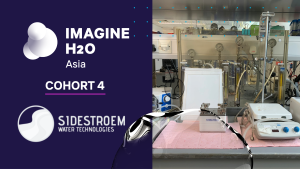SideStroem Water Technologies on forwardosmosistech
About
![]() SideStroem Water Technologies aims to make a positive environmental impact and contribute to reversing Mankind’s ecological overspending by reinventing resource recovery. This is achieved by applying advanced separation technologies in industrial wastewater treatment and industrial processes to decrease costs through energy savings combined with increased recovery of water & valuable solute side streams.
SideStroem Water Technologies aims to make a positive environmental impact and contribute to reversing Mankind’s ecological overspending by reinventing resource recovery. This is achieved by applying advanced separation technologies in industrial wastewater treatment and industrial processes to decrease costs through energy savings combined with increased recovery of water & valuable solute side streams.
Initially, SideStroem will target India’s textile and tannery industries in Tamil Nadu and – at a later stage – partner with leading global players within the fermentation industry. Tamil Nadu alone represents a Total Addressable Market (TAM) in excess of $USD 3.5Bn and a Service Obtainable Market (SOM) in excess of $USD 50M.
head office
SideStroem Water Technologies
331 North Bridge Road, #12-03, Odeon Towers, Singapore 188720
forward osmosis activities
SideStroem Water Technologies is currently developing and scaling forward osmosis membrane technologies for advanced resource recovery within industrial wastewater treatment and process optimization within the fermentation industry.
Value proposition within industrial wastewater treatment
Forward osmosis is one of a handful membrane-based low-energy ZLD alternatives capable of significantly reducing ZLD costs. Additionally, SideStroem’s forward osmosis technology will enable simultaneous recovery of both water & valuable solute side streams from wastewater with the following value for industrial end users:
- Decreased OPEX costs of wastewater treatment leading to lower payback time of wastewater treatment systems using SideStroem’s forward osmosis technology.
- Superior resource recovery ensures compliance with discharge regulations while enabling increased production capacity.
Value proposition within industrial process optimization
SideStroem’s forward osmosis technology will enable continuous ethanol removal from fermentation broths with minimal loss of target product (most likely, low molecular weight organic compound, peptide, or protein) during the ethanol removal process. This will allow fermentation industries to switch to continuous fermentation processes with all the associated gains.
mentions of Sidestroem water technologies on forwardosmosistech
SideStroem Water Technologies and Goldfinch Engineering partner to improve industrial wastewater treatment in India
SideStroem Water Technologies recently announced they started testing their nano-selective forward osmosis (NSFO) technology with [...]
Jun
SideStroem confirms first use case testing by partners during Q1 2025
SideStroem is a Singapore based water technology company developing a proprietary nano-selective forward osmosis technology [...]
Jan
Nano-selective forward osmosis technology by SideStroem featured in Everything About Water
The Singapore based resource recovery specialist, SideStroem Water Technologies, recently had their nano-selective forward osmosis [...]
Feb
SideStroem and Singapore Institute of Technology featured in AsianScientist
SideStroem’s nanofiltration-type (NF-type) FO technology is designed to selectively recover and recycle both water and [...]
Apr
SideStroem joins world class accelerator program
In a recent publication by Eco-Business, Singapore-based SideStroem Water Technologies Pte. Ltd. was announced as [...]
Nov
SideStroem Water Technologies and the Singapore Institute of Technology (SIT) collaborate to develop nanofiltration-type forward osmosis (NF-FO) membranes
The research collaboration enables SideStroem to leverage SIT’s strengths in membrane development. Singapore-based SideStroem Water [...]
Sep
SideStroem Water Technologies uses novel FO membrane technologies to reinvent resource recovery and enable productivity gains
About SideStroem Water Technologies SideStroem Water Technologies is a Singapore-based start-up founded with the [...]
1 Comments
Jul



